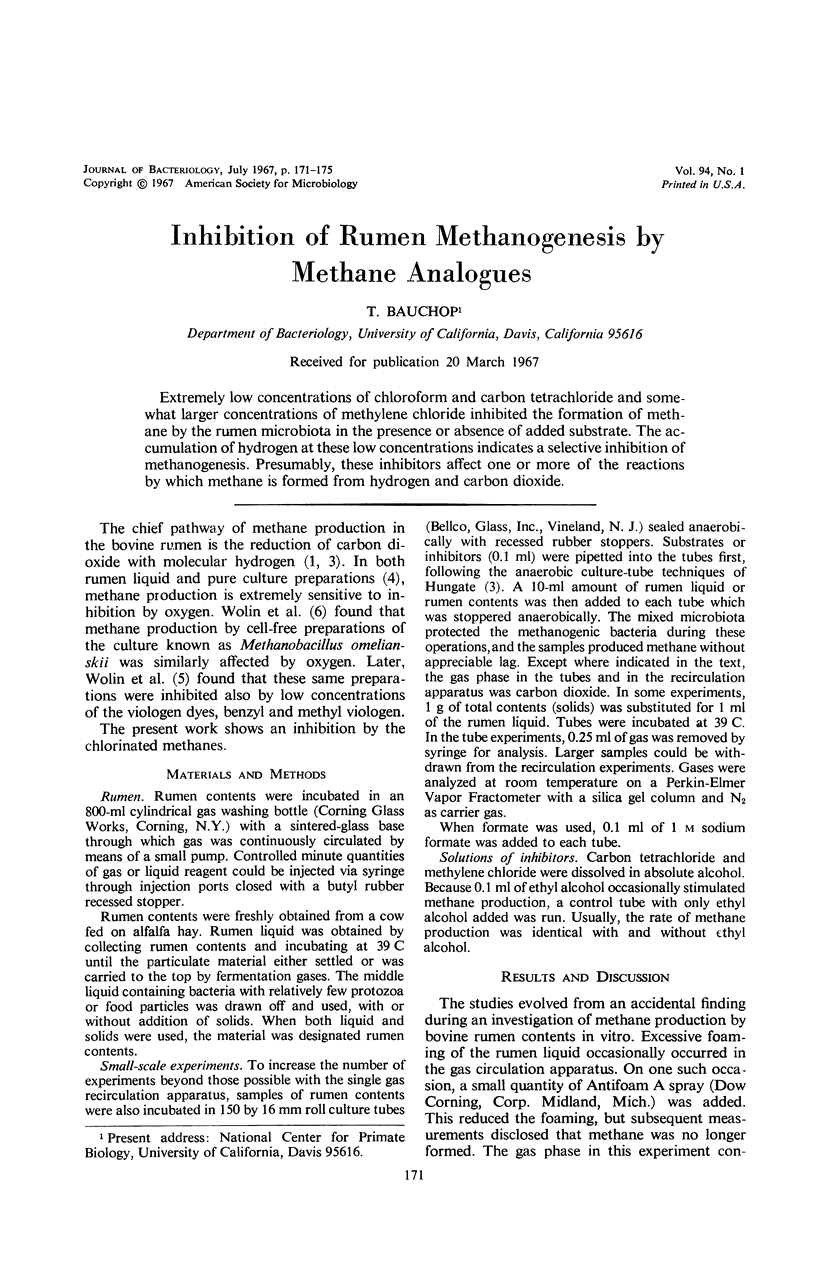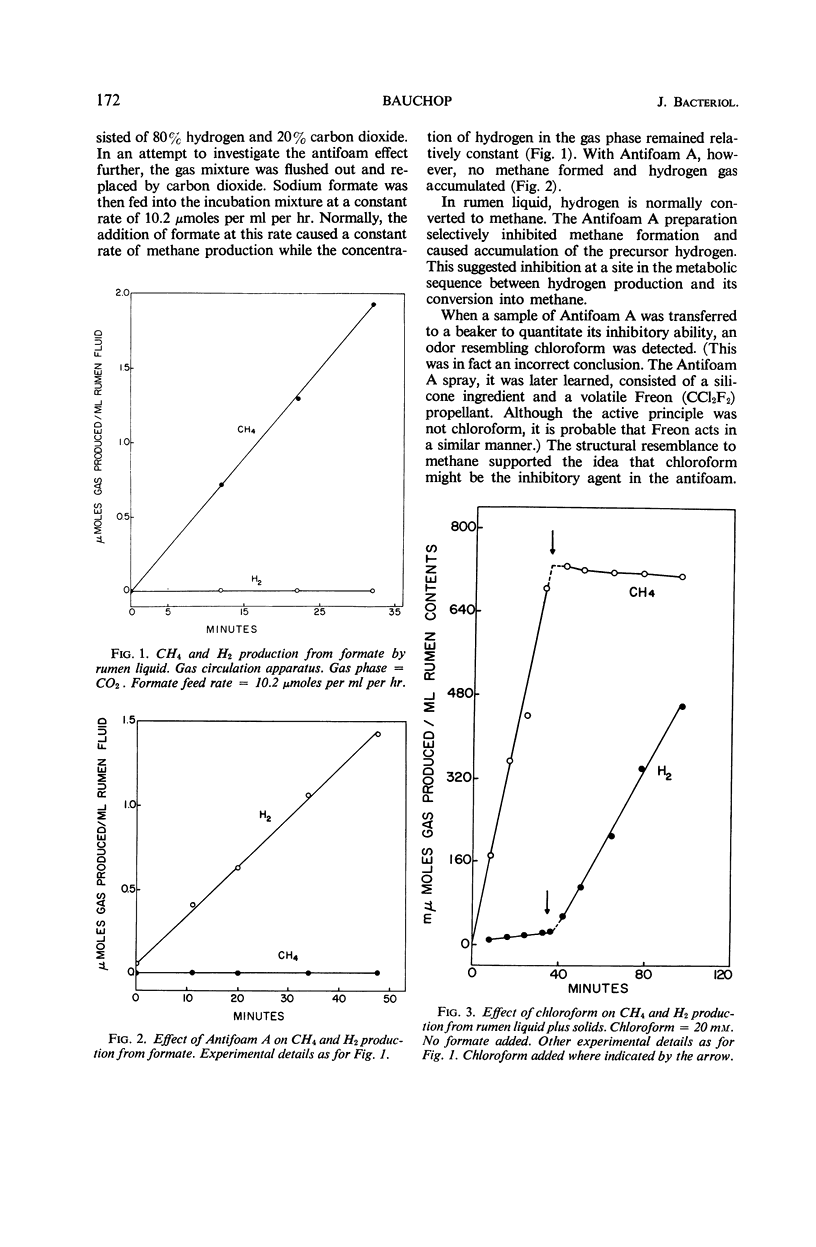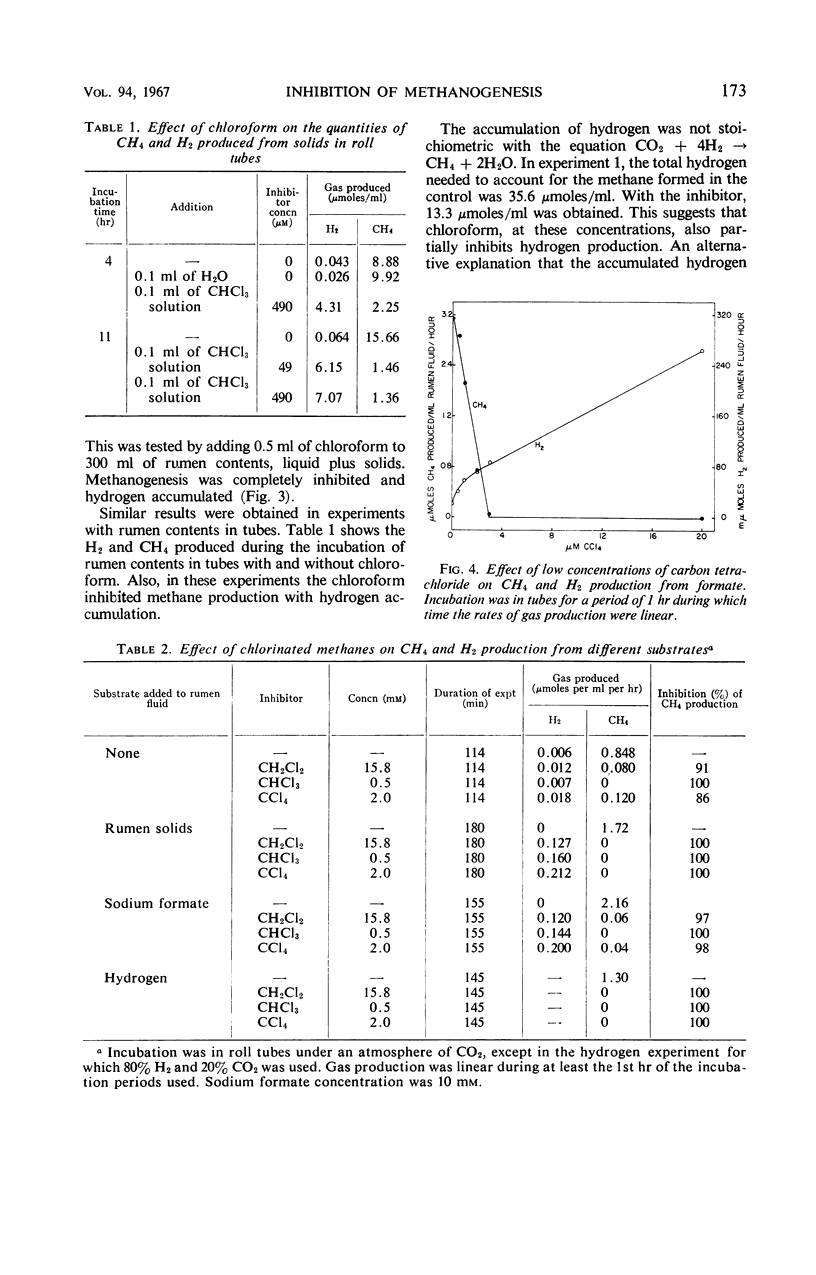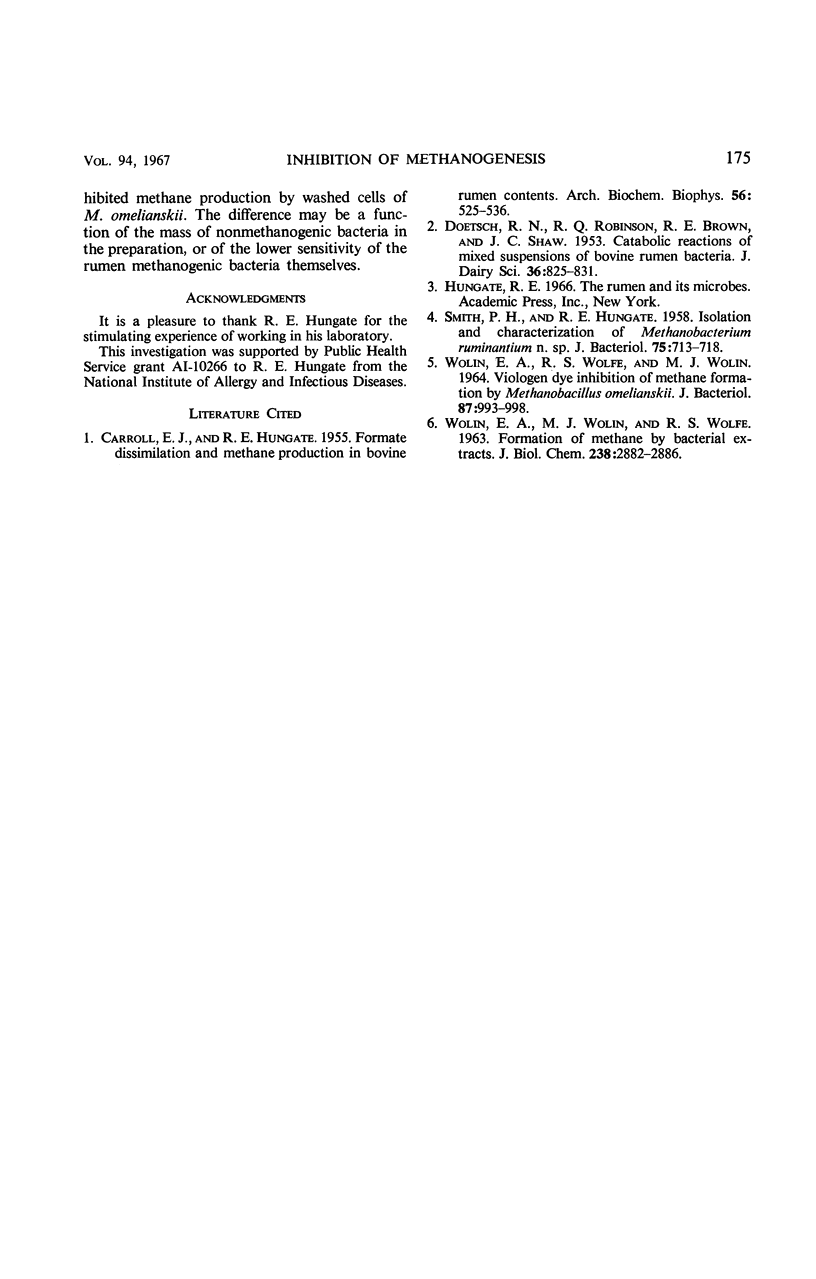Abstract
Extremely low concentrations of chloroform and carbon tetrachloride and somewhat larger concentrations of methylene chloride inhibited the formation of methane by the rumen microbiota in the presence or absence of added substrate. The accumulation of hydrogen at these low concentrations indicates a selective inhibition of methanogenesis. Presumably, these inhibitors affect one or more of the reactions by which methane is formed from hydrogen and carbon dioxide.
Full text
PDF




Selected References
These references are in PubMed. This may not be the complete list of references from this article.
- CARROLL E. J., HUNGATE R. E. Formate dissimilation and methane production in bovine rumen contents. Arch Biochem Biophys. 1955 Jun;56(2):525–536. doi: 10.1016/0003-9861(55)90272-1. [DOI] [PubMed] [Google Scholar]
- SMITH P. H., HUNGATE R. E. Isolation and characterization of Methanobacterium ruminantium n. sp. J Bacteriol. 1958 Jun;75(6):713–718. doi: 10.1128/jb.75.6.713-718.1958. [DOI] [PMC free article] [PubMed] [Google Scholar]
- WOLIN E. A., WOLIN M. J., WOLFE R. S. FORMATION OF METHANE BY BACTERIAL EXTRACTS. J Biol Chem. 1963 Aug;238:2882–2886. [PubMed] [Google Scholar]
- Wolin E. A., Wolfe R. S., Wolin M. J. Viologen dye inhibition of methane formation by Methanobacillus omelianskii. J Bacteriol. 1964 May;87(5):993–998. doi: 10.1128/jb.87.5.993-998.1964. [DOI] [PMC free article] [PubMed] [Google Scholar]


